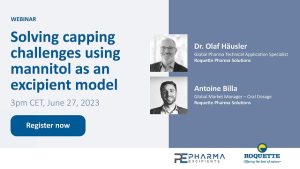Binary Polymeric Surfactant Mixtures for the Development of Novel Loteprednol Etabonate Nanomicellar Eyedrops

The treatment of several ocular inflammatory conditions affecting different areas of the ocular globe involves the administration of topical ophthalmic formulations containing corticosteroids. This research was aimed at evaluating the solubilising efficacy of 5.0% w/w of different binary mixtures of commercial amphiphilic polymeric surfactants with the purpose of obtaining nanomicellar solutions containing a high amount of loteprednol etabonate (LE). The selected LE-TPGS/HS nanomicelles, containing 0.253 mg/mL of the drug, had a small size (=13.57 nm) and uniform distribution (Polydispersity Index = 0.271), appeared completely transparent and perfectly filterable through 0.2 μm membrane filter, and remained stable up to 30 days at 4 °C.
The critical micellar concentration (CMCTPGS/HS) was 0.0983 mM and the negative value of the interaction parameter between the polymeric-surfactant-building unit (βTPGS/HS = −0.1322) confirmed the ability of the polymeric surfactants to interact, favouring the dissolution of LE into nanomicelles. The disappearance of the endothermic peak of LE in the DSC analysis confirmed the interactions of LE with the polymeric surfactants. LE-TPGS/HS produced in vitro LE which sustained diffusion for 44 h (more than 40% of encapsulated LE). Furthermore, the lack of a significant cytotoxic effect on a sensitive corneal epithelial cell line makes it a candidate for further biological studies.
Download the full article as PDF here Binary Polymeric Surfactant Mixtures for the Development of Novel Loteprednol Etabonate Nanomicellar Eyedrops
or read it here
Materials
The following materials were used as received: loteprednol etabonate (LE), kindly given by Farmabios (Pavia, Italy); Macrogol 15 hydroxy stearate (HS, Kolliphor® HS-15); polyvinyl caprolactam–polyvinyl acetate–polyethylene glycol copolymer (SolP, Soluplus®); Polyoxyl-35 hydrogenate castor oil (EL, Kolliphor®-EL), kindly provided by BASF (Ludwigshafen, Germany); d-α-Tocopherol polyethylene glycol succinate (TPGS, Isodel® Vitamin E TPGS 1000), provided by PMC Isochem (Vert-Le-Petit, France); Lotemax™, provided by Bausch & Lomb IOM S.p.A (Vimodrone, Italy). All other chemicals and solvents were of analytical grade. Water was purified via reverse osmosis using the MilliQ apparatus (Millipore®, Milan, Italy).
Tampucci, S.; Monti, D.; Burgalassi, S.; Terreni, E.; Paganini, V.; Di Gangi, M.; Chetoni, P. Binary Polymeric Surfactant Mixtures for the Development of Novel Loteprednol Etabonate Nanomicellar Eyedrops. Pharmaceuticals 2023, 16, 864. https://doi.org/10.3390/ph16060864
Visit our new Webinar:
Solving capping challenges using mannitol as an excipient model
Get more information & register here:


